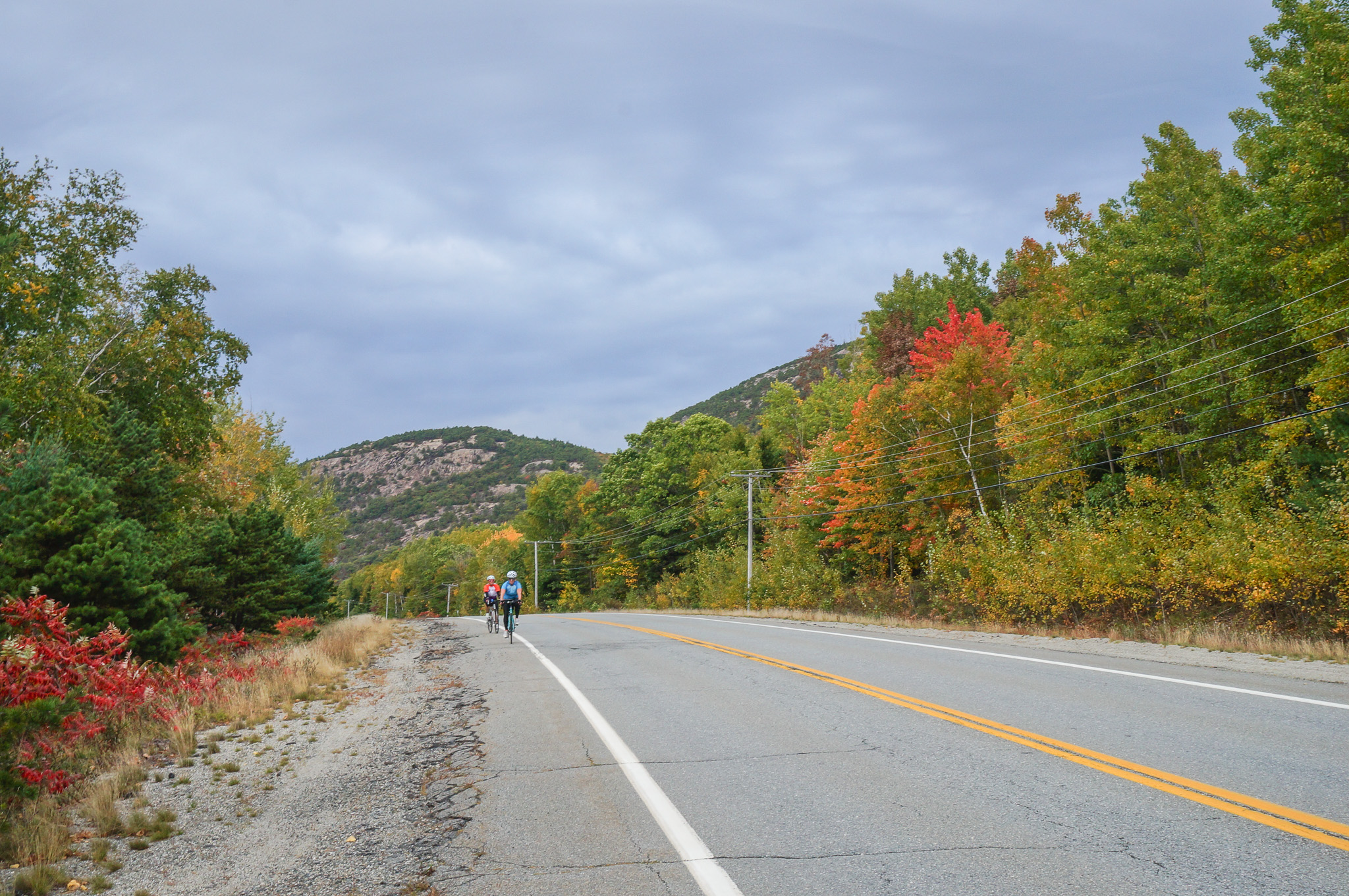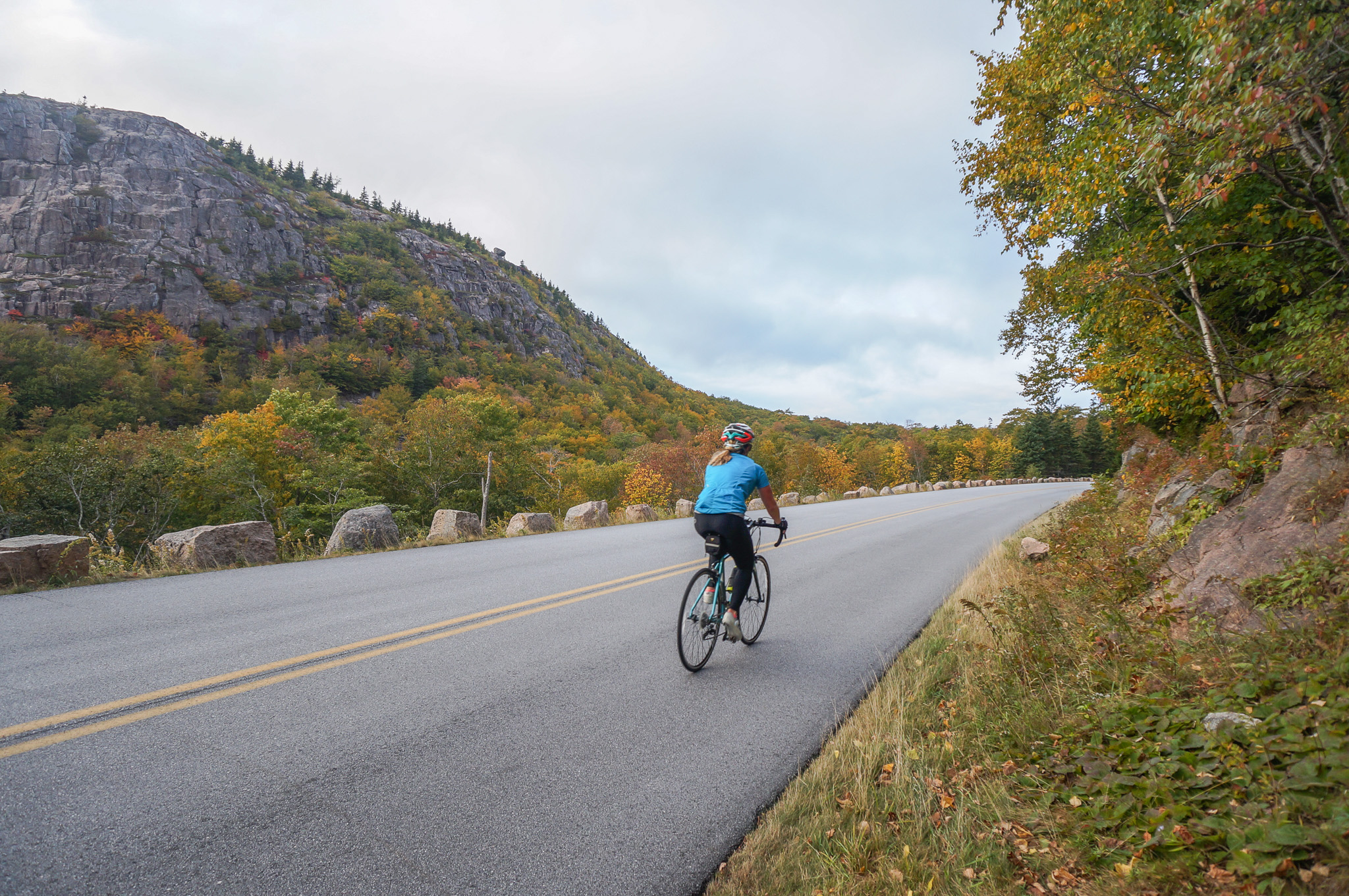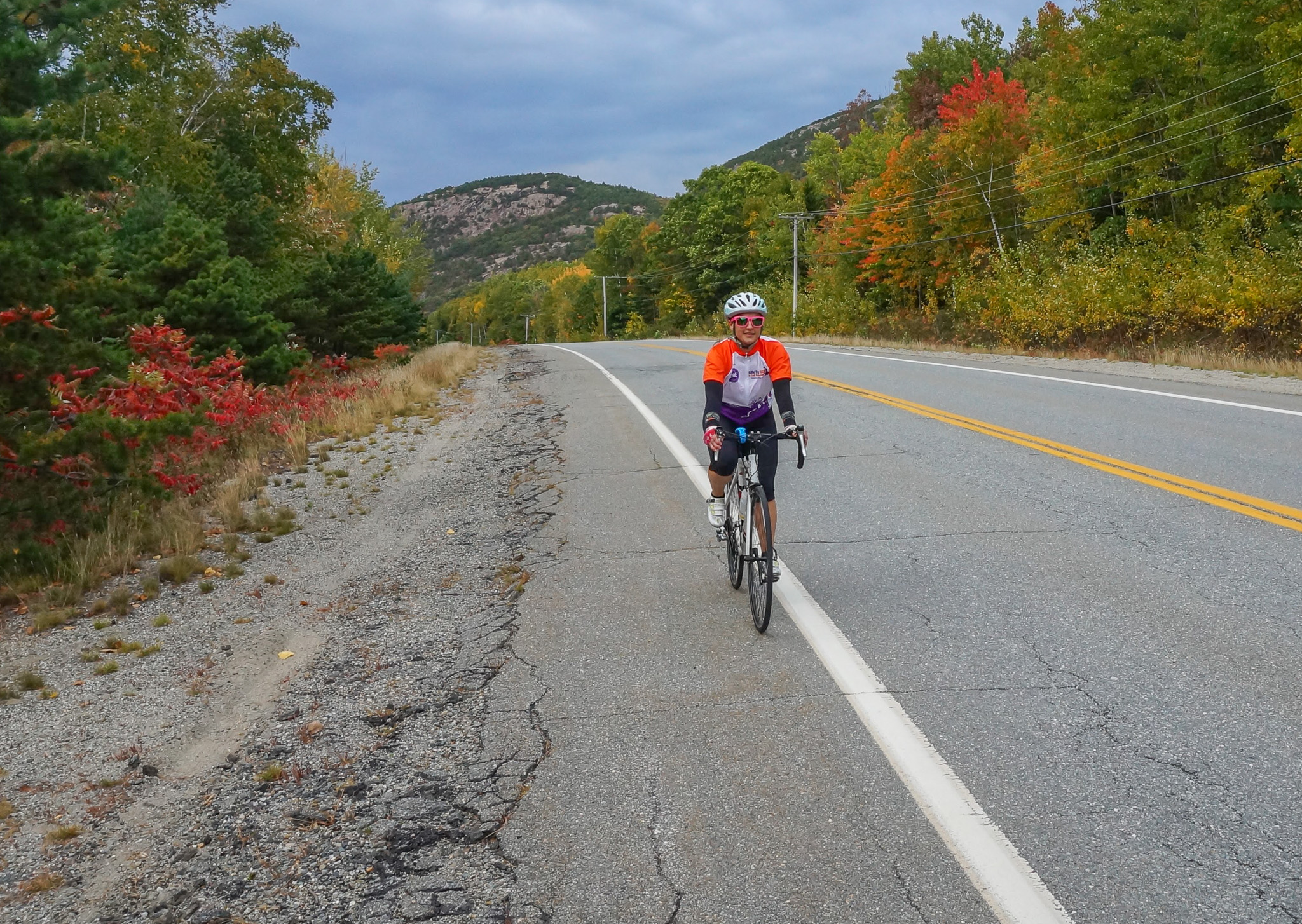The definition of a “long” road bike ride varies from cyclist to cyclist. Some riders find conquering 30 miles is a huge achievement while others think triple-digit mileage is the mark of a truly massive ride. No matter what your idea of a big road ride is, below are 10 long-bike-ride survival tips that everyone from rookie riders to seasoned cyclists can benefit from.

10 Tips for a Long Road Bike Ride
1. Get a Tune-Up
Months of training can easily be sabotaged by a bad bike. Save yourself from a ride-ending issue by getting your bike tuned up before a long ride. Bike shops get busy, especially during prime riding season, so don’t bring it in the day before the big day. Play it safe and aim to give your local bike shop a week to turn around your ride.
2. Hope for the Best, Plan for the Worst
Even if your bike is in good working order, it’s still smart to plan for the worst. Consider carrying a small repair kit consisting of:
- a multi-tool with a chain breaker
- a master link
- two tubes (or a tubeless tire repair kit and a single tube if running tubeless tires)
- a pump or CO2 inflator
A repair kit is only as good as the person using it, so also spend some time learning how to make common roadside fixes. It’s a good idea to carry a cell phone—best case, you use it to take mid-ride selfies; worst case, to call for a lift in the event of a ride-ending mechanical. Lastly, carry your ID or invest in an identification band, just in case of an accident.
3. Pad Against Pain
Padded bike shorts make cycling infinitely more comfortable, no matter the distance you’re riding. They protect your…umm, undercarriage, and cushion your sit bones over the course of a ride—relieving pressure from the saddle and minimizing vibration from the road, all while wicking away moisture.
The proper way to wear bike shorts is with nothing underneath them. That’s right, cyclists are actually encouraged to go commando. The chamois—the official term for the padded part of the shorts—is designed to be worn next to your skin, so leave your underwear at home (or anywhere else other than under your bike shorts).
4. Move Around
Your bits and butt aren’t the only touchpoints with a bicycle; over the course of a long ride, you’ll also put a lot of strain on your hands. As you ride, regularly switch the positions of your hands on the bars—from the tops to the hoods to the drops—to relieve pressure. This will also help prevent aches and pains in your neck and shoulders, which can form over a long day on your bike. Occasionally standing up while pedaling or coasting can also help give your body a break.
5. Set a Proper Pace
The excitement of a big road bike ride lures many riders into coming out of the gate hot and hammering the opening miles. Keep in mind that you’re in for a long day, let the adrenaline subside, and save some energy to finish strong.

6. Pedal Smart
Rather than mashing your big ring, find your sweet spot—for most riders, a gear that allows you to pedal at a cadence between 80-100 rpm—that balances the demands placed on your muscular and cardiovascular systems.
Some cycling computers feature cadence monitors. You can also calculate your cadence as you ride by counting the number of times one leg pushes down on the pedals in 30 seconds and multiplying it by two.
7. Join a Bike Gang
Riding with others is more fun and more efficient. Cyclists in the front reduce wind resistance for the riders behind them. If possible, take a turn at the front and give your riding partner(s) a break at the back.
8. Know the Route
No one wants to add miles to an already long ride. Know the route in advance and have access to it during your ride. Downloading the route in advance to a GPS or an app like Strava or Ride with GPS offers a high-tech solution for staying on course. Looking for a more analog method? An old-school paper map is a tried-and-true navigational aid.
Pro tip: If packing a paper map, make sure to put it in a plastic baggie to protect it against rain, sweat, or a spilled water bottle.
9. Fuel for Success
It takes a lot of energy to complete a long road bike ride. Everyone’s a little bit different, but a good rule of thumb is to eat a good breakfast, then eat and drink regularly throughout the ride. A proven strategy for staying well-fueled is to eat and drink before you’re hungry and thirsty.
Whether you’re going out solo or with a group of friends, pack plenty of snacks and fluids, plan a route that passes a place to refuel (like a convenience store), or consider pre-placing food and drink on your route. If you’re taking part in an organized ride, take advantage of any aid stations that are provided along the way.
10. Leave Enough Time
Getting a late start is a surefire way to put yourself behind the eightball right out of the gate. Get an early start to ensure you’re not rushed and have plenty of time to finish your big ride.

Long road bike rides are fun! Remember it’s not a race—take time to enjoy the scenery, the ride, and replenishing all the calories you burn!
Tim Peck and Doug Martland
Tim and Doug met long ago at the Eastern Mountain Sports in Canton, Massachusetts. Bonding over a love of slick Quincy Quarry granite, White Mountain sufferfests, and scheming up adventures while folding tee-shirts, today Tim and Doug collaborate to write about their favorite outdoor activities and occasionally get nostalgic about tee-shirt tables.
Related Posts
April 2, 2024
10 Tips for Mountain Biking Etiquette During Mud Season
One rough spring could ruin the…




